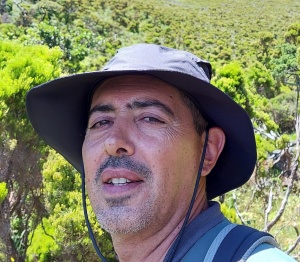Elias, R.B., Gil, A., Silva, L., Fernández-Palacios, J.M., Azevedo, E.B. & Reis, F. (2016) Natural zonal vegetation of the Azores Islands: characterization and potential distribution.
Phytocoenologia,
46(2), 107-123. DOI:10.1127/phyto/2016/0132 (IF2016 1,657; Q2 Plant Sciences)
Aims: (1) To present a statistically based classification of Azorean natural zonal vegetation; (2) to characterize the main features of this vegetation and (3) to present the first model of its potential distribution in the nine Azorean Islands. Study area: Azores (São Miguel, Pico, Terceira and Flores islands). Methods: Information from 139 plots set up in the best preserved vegetation patches was used. Ward’s agglomerative clustering method was applied in order to identify community types. Potential distribution of these community-level entities was modeled in relation to climatic predictors, using MAXENT. Results: Eight vegetation belts were identified: Erica-Morella Coastal Woodlands, Picconia-Morella Lowland Forests, Laurus Submontane Forests, Juniperus-Ilex Montane Forests, Juniperus Montane Woodlands, Calluna-Juniperus Altimontane Scrublands, Calluna- Erica Subalpine Scrublands and Calluna Alpine Scrublands. Modeling results suggest that Picconia-Morella and Laurus forests (Laurel forests) are the potential dominant vegetation in the Azores. With the possible exception of Juniperus woodlands, Pico could have all vegetation types, in contrast with Santa Maria, Graciosa and Corvo with only three. Conclusions: Most of Azorean natural vegetation has been transformed or degraded by human action, with a greater impact on Laurel forests. The best preserved vegetation belts are located above 600 m a.s.l., including Juniperus-Ilex Forests and Juniperus Woodlands, perhaps the only example of island montane cloud forests existing outside the tropics. In the present work, for the first time we used a statistical method to classify zonal vegetation, gave it a bioclimatic foundation and applied it to the whole archipelago, thus defining and describing the main vegetation belts of the Azores. This work also gives the first potential distribution maps of the zonal vegetation for each island. This information may be used for landscapeplanning and management, selection of sites and species for ecological restoration and evaluation of climate change effects.


